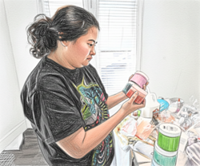Adaptive clothing plays a crucial role in enhancing the lives of people with disabilities. Photo: 123rf.com
Dave Stevens said his whole life has been about overcoming obstacles and beating the odds.
Stevens, 57, of Bristol in Tennesseee, the United States was born without legs and was adopted by two loving parents who instilled in him that he could do anything in life that he wanted to do.
Already a subscriber? Log in
Save 30% OFF The Star Digital Access
Cancel anytime. Ad-free. Unlimited access with perks.





